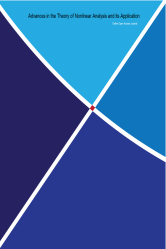Analysis and Simulation of Fractional-Order Diabetes Model
Analysis and Simulation of Fractional-Order Diabetes Model
Fractional order glucose insulin system, stability Picard–Lindelof approach, Fixed point theorem, ABC derivative,
___
- [1] L. Guariguata, D.R. Whiting, I. Hambleton, J. Beagley, U. Linnenkamp, and J. E. Shaw, Global estimates of diabetes prevalence for 2013 and projections for 2035, Diabetes Research and Clinical Practice, vol. 103, no. 2, pp. 137-149, 2014.
- [2] C. Florkowski, HbA1c as a diagnostic test for diabetes mellitus-reviewing the evidence, Clinical Biochemist Reviews, vol. 34, no. 2, pp. 75-83, 2013.
- [3] J. Nicholas, J. Charlton, A. Dregan, and M. C. Gulliford, Recent hba1c values and mortality risk in type 2 diabetes, population-based case-control study, PLoS One, vol. 8, no. 7, Article ID e68008, 2013.
- [4] American Diabetes Association, Standards of medical care in diabetes-2015 abridged for primary care providers, Clinical Diabetes, vol. 33, no. 2, pp. 97-111, 2015.
- [5] E.J. Lyons, Z.H. Lewis, B.G. Mayrsohn, and J.L. Rowland, Behavior change techniques implemented in electronic lifestyle activity monitors: a systematic content analysis, Journal of Medical Internet Research, vol. 16, no. 8, p. e192, 2014.
- [6] W. Hamer, Epidemiology Old and New. London: Kegan Paul, 1928.
- [7] R. Ross, The Prevention of Malaria, 1910.
- [8] G.A. Leonov, N.V. Kuznetsov, T.N. Mokaev, Homoclinic orbits, and self-excited and hidden attractors in a Lo- renz-like system describing convective ?uid motion. Eur Phys J Spec Top, 224(8):1421-1458.
- [9] A. Boutayeb, E.H. Twizell, K. Achouayb, A. Chetouani: A mathematical model for the burden of diabetes and its compli- cations. Biomed. Eng. Online 3(1), 20 (2004).
- [10] C. Zecchin, A. Facchinetti, G. Sparacino, G. De Nicolao, C. Cobelli, A new neural network approach for short-term glucose prediction using continuous glucose monitoring time-series and meal information. Conf. Proc. IEEE Eng. Med. Biol. Soc. 2011, 5653-5656 (2011).
- [11] A.A. Sharief, A. Sheta, Developing a mathematical model to detect diabetes using multigene genetic programming. Int. J. Adv. Res. in Artif. Intell. (IJARAI) 3(10), 54 (2014).
- [12] Y.C. Rosado, Mathematical model for detecting diabetes. In: Proceedings of the National Conference on Undergraduate Research (NCUR), University of Wisconsin La-Crosse, La-Crosse (2009).
- [13] E. Ackerman, I. Gatewood, J. Rosevear, G. Molnar, Blood glucose regulation and diabetes. In: Heinmets, F. (ed.) Concepts and Models of Biomathematics, pp. 131-156. Decker, New York (1969).
- [14] M. Asif, et al. Numerical modeling of NPZ and SIR models with and without diffusion. Results in Physics 19 (2020): 103512.
- [15] M. Asif, et al. Numerical simulation for solution of SEIR models by meshless and finite difference methods. Chaos, Solitons and Fractals 141 (2020): 110340.
- [16] Ahmad, Shabir, et al. Fractional order mathematical modeling of COVID-19 transmission. Chaos, Solitons and Fractals 139 (2020): 110256.
- [17] F.A. Rihan, et al. A fractional-order epidemic model with time-delay and nonlinear incidence rate. Chaos, Solitons and Fractals 126 (2019): 97-105.
- [18] F. Haq, K. Shah, G. Rahman, M. Shahzad, Numerical solution of fractional order smoking model via laplace Adomian decomposition method, Alexandria Engineering Journal (2018) 57, 1061-1069.
- [19] S. Kumar, A. Kumar, I K. Argyros, 2017, A new analysis for the Keller-Segel model of fractional order, Numer. Algorithms, 75 213-228.
- [20] S. Kumar, M.M. Rashidi, 2014, New analytical method for gas dynamic equation arising in shock fronts, Comput. Phys. Commun., 185 1947-1954.
- [21] Z. Odibat, A.S. Bataineh, 2015, An adaptation of homotopy analysis method for reliable treatment of strongly nonlinear problems: construction of homotopy polynomials, Math. Meth. Appl. Sci., 38 991-1000.
- [22] A. Boutayeb, E.H. Twzell, K. Achouayti, A. Chetouan, A mathematical model for the burden of diabetes and its compli- cations Biomed Eng Online 3(1), 20(2004).
- [23] C.P. Li, C.X. Tao, 2009, On the fractional Adams method, Comput. Math. Appl., 58 1573-1588.
- [24] B.S.T. Alkahtani, 2016, Chua's circuit model with Atangana-Baleanu derivative with fractional order, Chaos Solitons Fractals, 89 547-551.
- Başlangıç: 2017
- Yayıncı: Erdal KARAPINAR
Forward-Backward Alternating Parallel Shooting Method for Multi-layer Boundary Value Problems
Mohammed ALMALAHI, Satish K. PANCHAL
Analysis and Simulation of Fractional-Order Diabetes Model
Muhammad FARMAN, Ali AKGÜL, Aqeel AHMAD
Some Properties for Certain Subclasses of Analytic Functions Associated with $k-$Integral Operators
Eman ABUJARAD, Mohammed H ABUJARAD, Thabet ABDELJAWAD, Fahd JARAD
Murali GOUR, Pranay GOSWAMİ, Sunil JOSHİ
On the spectral properties of Non- selfadjoint Elliptic Differential Operators in Hilbert space
Certain Generalized Fractional Integral Inequalities
Kamlesh JANGİD, Sunil Dutt PROHİT, Kottakkaran Sooppy NİSAR, Thabet ABDELJAWAD
Remarks on F-weak contractions and discontinuity at the fixed point
Cauchy problem with $\psi $--Caputo fractional derivative in Banach spaces
